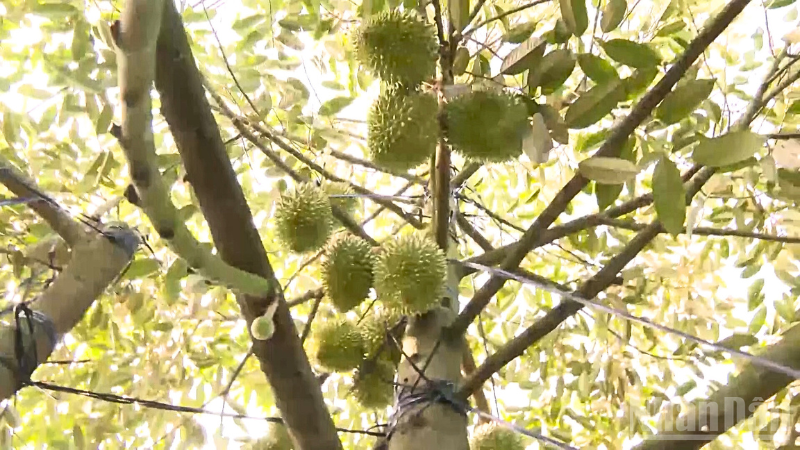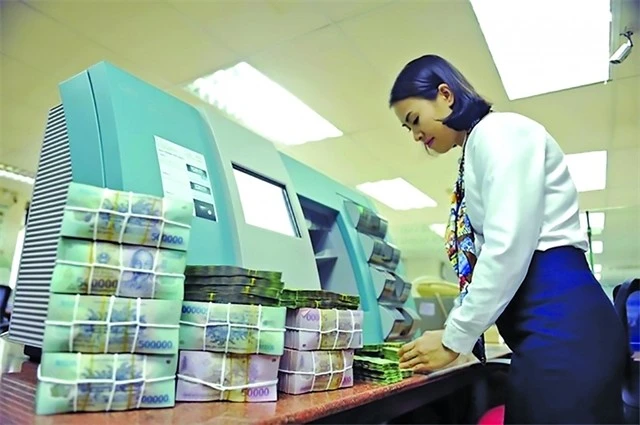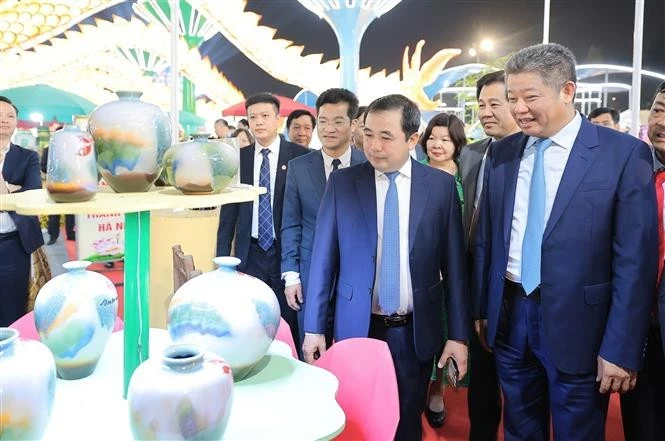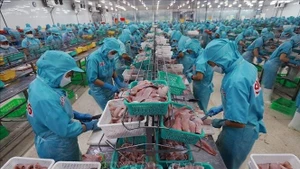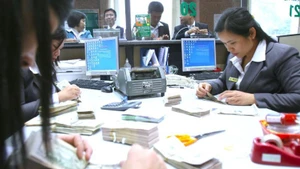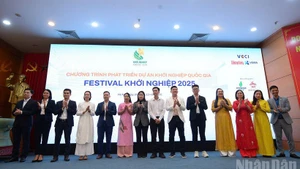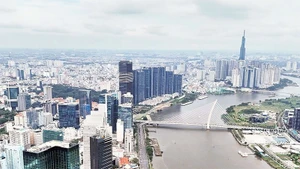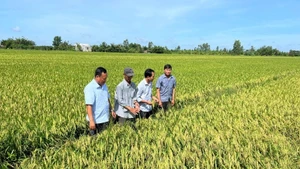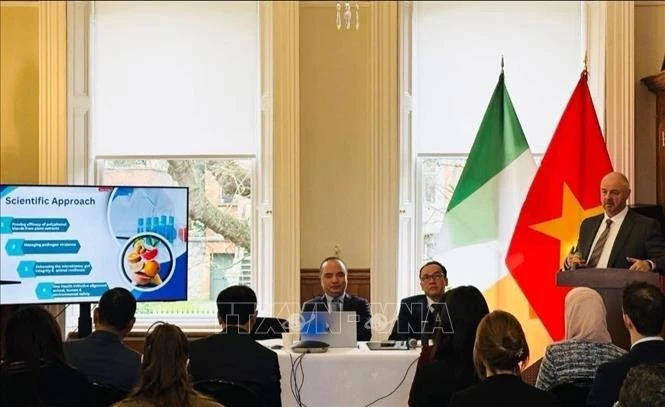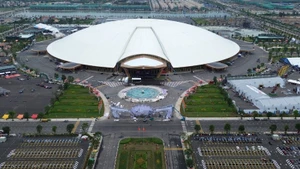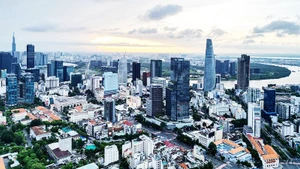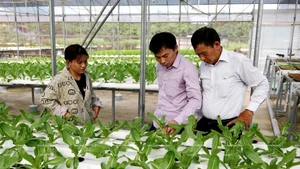Cadmium residues
According to Dr Duong Minh Vien, Head of the Faculty of Soil Science at the College of Agriculture (Can Tho University), research results have revealed alarming levels of cadmium accumulation in the soil and in durian trees, one of the key factors directly affecting the quality of the fruit for export.
Cadmium is a highly mobile heavy metal, easily dissolved and absorbed in soil. This means cadmium cannot be broken down and tends to persist in the soil environment for the long term. Studies also show that cadmium residues in durian orchards mainly originate from farming practices, particularly the extensive use of phosphate fertilisers.
Research in Viet Nam and abroad confirms that the primary source of cadmium accumulation in soil is phosphate fertiliser, with contamination levels depending largely on cadmium impurities in phosphate rock – the raw material for fertiliser production.
In addition, some types of organic fertilisers, if made from plant-based raw materials, may also carry a risk of cadmium contamination.
Soil surveys of 7–8-year-old durian orchards in Can Tho and Dong Thap found total cadmium levels ranging from 200-1,400 microgram/kilogram. Dr Vien assessed this as a moderate level; however, besides the heavy use of phosphate fertiliser, farmers also apply large amounts of nitrogen and potassium, which increases cadmium mobility in soil and makes it easier for the trees to absorb.
Notably, durian is no longer planted only on fertile alluvial soil but is also being increasingly cultivated in acid sulphate soils.
To improve the properties of acid sulphate soil and stimulate durian flowering, farmers must apply large amounts of phosphate fertiliser – in some places up to 5–6 kg per tree (superphosphate, fused phosphate), not to mention diammonium phosphate and NPK. This, in turn, increases cadmium accumulation in the soil.
Trinh Thanh Dung, Business Director of Vinacam, one of the major fertiliser importers and suppliers, noted that durian favours phosphate fertiliser. When durian prices rise, farmers are even more inclined to apply high amounts of phosphate fertiliser to boost yields, inadvertently worsening cadmium accumulation.
Under current regulations, both imported and domestic fertilisers must comply with Vietnamese standards, with cadmium content not exceeding 12 milligram/kilogram.
However, until recently, there were no specific rules on cadmium residues in soil and agricultural products. The issue only came to the fore when China imposed limits on cadmium levels in imported durians, forcing fertiliser companies, including Vinacam, to review cadmium content in their products.
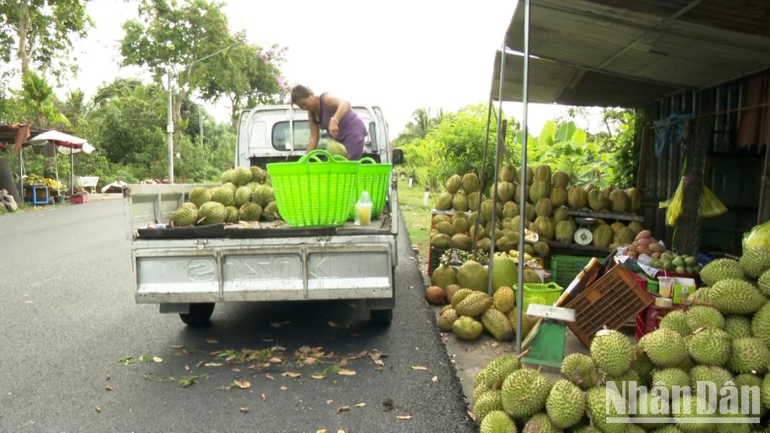
Multiple solutions for durian industry development
Nguyen Van Su, Chairman of the Can Tho Farmers’ Association, said durian has established itself as one of the key fruit crops of the Mekong Delta, bringing high incomes to thousands of farming households.
In particular, since China opened its market for official durian imports from Viet Nam, export turnover has increased rapidly, making durian a highlight of the agricultural sector.
However, consumers are becoming increasingly stringent in their requirements for quality, plant quarantine, and food safety – especially cadmium residues.
“Opportunities will only truly open up if we fully and strictly comply with the regulations of partner markets. We must reorganise production effectively, standardise processes, establish planting area codes, packing facilities, and traceability systems, and ensure quality control right from the source,” Su stressed.
According to Trinh Thanh Dung of Vinacam, even if fertiliser meets standards, excessive use by farmers over many years will still cause cadmium to accumulate in the soil.
To address this, over the past two years Vinacam has worked with factories to produce fertilisers containing less than 1 milligram/kilogram of cadmium, helping to reduce the risk of accumulation in soil and trees. This is seen as a positive move, especially as cadmium is difficult to eliminate completely and export markets may continue tightening regulations.
For better control, in June the Department of Crop Production and Plant Protection issued a decision on sustainable durian cultivation practices to ensure food safety.
The decision sets standards on fertiliser use, requiring that fertilisers circulated in Viet Nam comply with the national technical regulation on fertiliser quality, particularly regarding heavy metal content. For organic fertilisers, only those with heavy metal levels below the permissible threshold may be used.
To reduce cadmium levels in soil, Dr Vien suggested that farmers take measures to convert cadmium from an easily absorbable, mobile form into a precipitated form, making it less likely to be taken up by plants.
Proven effective solutions include growing plants with a high capacity for cadmium absorption, such as mustard greens and watercress, to extract cadmium from soil.
Raising soil pH by applying lime also helps reduce cadmium uptake, while using clean organic fertiliser (free from cadmium) improves soil and minimises residual cadmium risks.
Statistics show that Can Tho currently has 90 durian planting area codes, covering nearly 1,900 hectares, with over 7,300 hectares under harvest, producing 95,000 tonnes. Most of the city’s durian output is purchased directly at orchards by local traders.
In addition, some collective economic organisations and farming households have started linking up for sales, supplying fruit to retail outlets or through agro-ecotourism models.
These efforts help address immediate challenges while laying the groundwork for the long-term development of Can Tho’s durian industry in particular, and Viet Nam’s durian sector in general.
